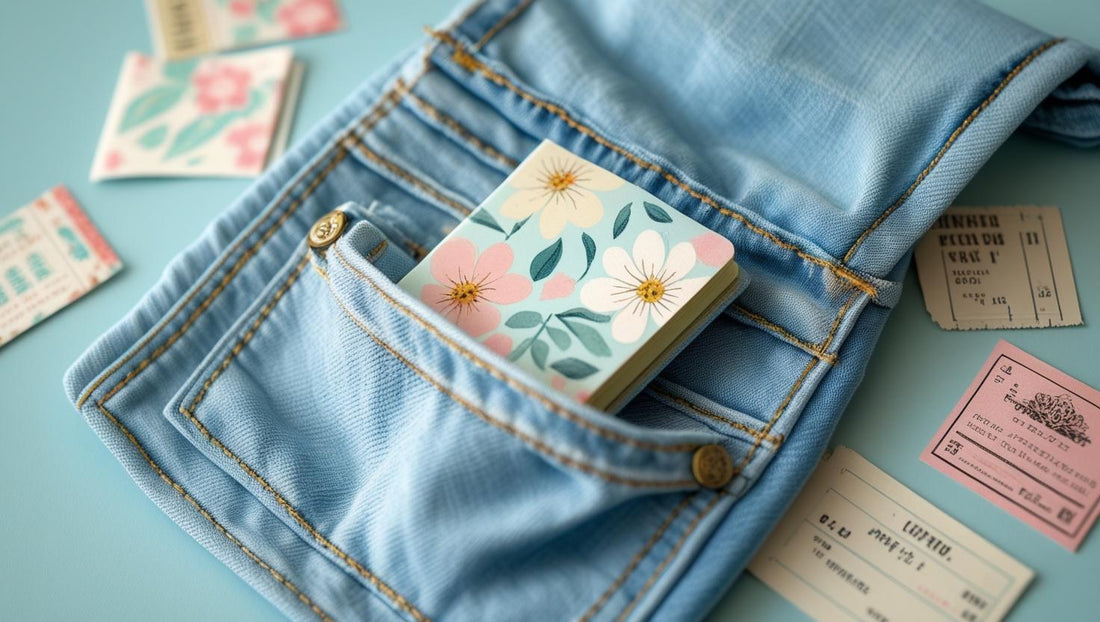
Pocket Journaling: Tiny Pages, Big Personality
Share
Small scraps. Big stories. No rules. Just glue, bits & magic.
Let’s be clear: pocket journaling isn’t about pouring your heart out in perfect handwriting. It’s about sticking things down. Ripping things up. Layering scraps of nothing until they look like something. It’s storytelling without the pressure. And it fits in your hand — or your handbag — depending on the day.
So, what is pocket journaling?
It’s exactly what it sounds like. Small-scale, gloriously scrappy, wonderfully portable journal pages, usually no bigger than your palm. Think old bus tickets, candy wrappers, torn-off labels, mystery photos from a flea market — all squished together with a bit of washi and a good attitude.
You might scribble a few words, a date, or a phrase. You might not. Some days it’s just a sticker and a rust-stained paperclip and that’s completely valid.
Why we love it:
-
It’s low pressure. You can finish a page in five minutes. Or less, if you don’t overthink it (highly recommended).
-
It’s portable. Chuck your supplies in a tin, zip pouch, or old glasses case. Go wild at a café or hide under a blanket. Your choice.
-
It uses what you’ve got. Tiny scraps = tiny masterpieces. Nothing’s too small or too weird.
-
It’s playful. There are no rules here. Glue down a teabag tag. Stamp a word. Draw a star. Walk away.
What you need to start:
-
A lil book or a stack of cut-down cardstock
-
Scissors, glue stick, tape (washi or rogue masking tape — no judgement)
-
Ephemera. Loads of it. Bits you’d usually bin. Bits you collect without knowing why.
-
Maybe a stamp or two, a pen if you're feeling fancy
-
A lil bit of mischief
Bonus tip: Make yourself a "Grab & Go" kit
Throw together a lil bit box full of scraps, tapes, and a few trusty tools. Keep it by the kettle, in your bag, or beside the couch. Wherever you sit still and fiddle. Pocket journaling thrives in tiny moments — the in-between spaces when you’re not doing much, but your hands want to.
Final thoughts
Pocket journaling isn’t deep and meaningful (unless you want it to be). It’s not tidy or structured. It’s a love letter to leftovers — the bits that usually don’t make the cut. And somehow, they tell your story better than anything else.
So go on — make a mess. Stick down the weird stuff. Keep it small, scrappy, and a lil bit different.

